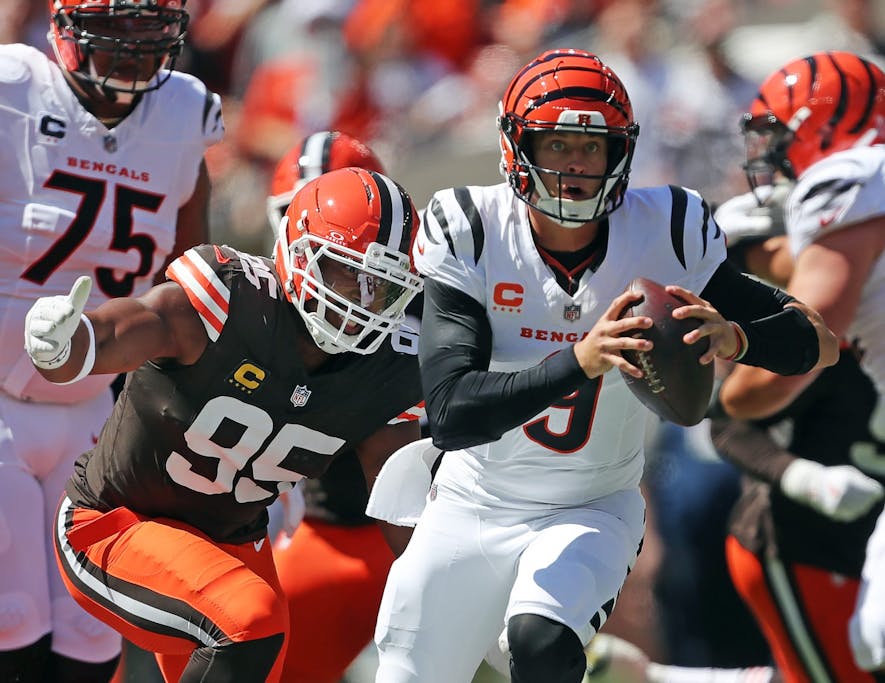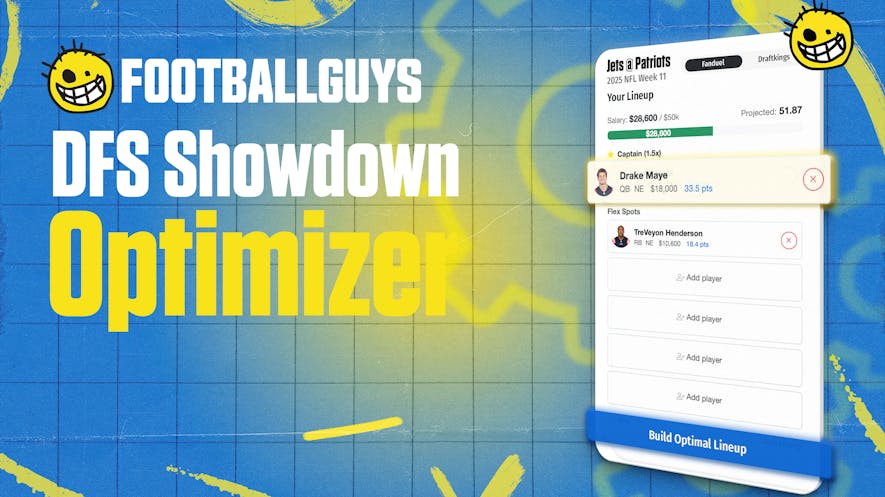Our staff gathered to assess the start of the NFL season and the first significant data point in relation to preseason expectations. How much should you adjust based on Week 1's results?
How long do you wait to pivot off preseason expectations for player roles, usage, and performance?
Maurile Tremblay
For roles/usage, my general rule is that, after the season starts, I give preseason expectations about 1.8 times as much weight as I give any particular week thus far. So after Week 1, I grant preseason expectations almost twice as much weight as the first week's games. After Week 2, I give season-to-date usage a little more weight than preseason expectations, and so on, until after Week 4, I no longer weigh my preseason expectations.
That can vary a bit from player to player, however, depending on how surprised I am by any unexpected usage patterns. For instance, heading into Week 1, while I expected Kaleb Johnson to have little or no role on passing downs, I thought he'd get about a third of the early-down work. Contrary to my expectations, he ended up having almost no role in any situation.
Understanding that usage roles can vary from week to week, I usually would adjust a player's role downward in these circumstances, but only by a moderate amount (i.e., in accordance with the ratios I described above). With Kaleb Johnson, however, his tiny Week 1 role isn't terribly surprising because there were warning signs throughout training camp that Johnson didn't look as dynamic as the team had hoped. Since his tiny Week 1 role can be viewed as confirming legitimate prior concerns, I'm adjusting his expected future role more significantly than I otherwise would (though I still think it will ultimately grow compared to his Week 1 usage).
I am generally slower to adjust performance (i.e., efficiency) expectations than I am to adjust usage expectations. I try to evaluate performance based on both the eyeball test and statistics, and both can be deceiving in the short term. When I adjust my performance expectations for a player, it's not based on a set amount of time (such as weeks), but rather on the sample size of their work so far. I typically don't revise my performance expectations for a running back until he's had at least 50 touches, whether that takes two weeks or eight.
Jason Wood
I largely agree with Maurile in that I weigh preseason expectations heavily early until we get enough games in the current season to switch over completely. I'm a bit more gradual in my shift, though, as I'm still weighing preseason games to some extent through the first six games. However, there's no universal rule, and to some extent, you have to evaluate the confidence you had in preseason expectations as well as the magnitude of the early-week divergences. For example, Joe Burrow throwing for 113 yards in Week 1 bears almost no impact on my rest-of-season or dynasty modeling, because we know what that offense should look like and have a long enough history with Burrow to know Week 1 was a massive outlier. On the other hand, we all had questions about the Jaguars' running back rotation, so my preseason modeling was low conviction. Seeing Travis Etienne Jr., the incumbent starter, get a dominant workload was enough for me to revamp my Jaguars rushing model completely; a decision that was further supported by the team's trade of Tank Bigsby to the Eagles.


